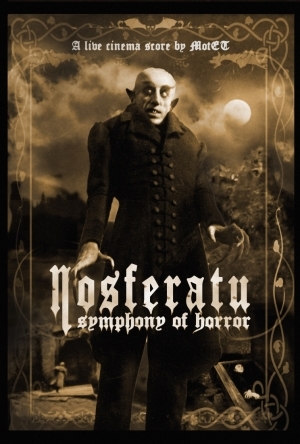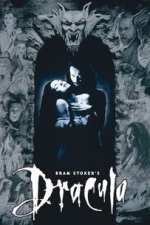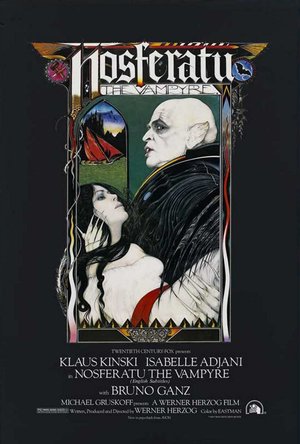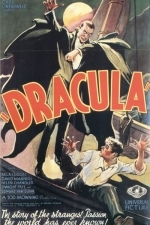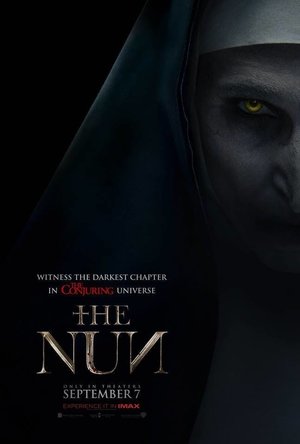Search
Search results
Eugene Higgins (47 KP) rated Nosferatu (Eine Symphonie Des Grauens) (1922) in Movies
Oct 25, 2019
Matthew Krueger (10051 KP) created a poll
Sep 27, 2019 (Updated Oct 1, 2019)
Robert Eggers recommended Nosferatu (Eine Symphonie Des Grauens) (1922) in Movies (curated)
Dean (6927 KP) rated Bram Stoker's Dracula (1992) in Movies
Feb 12, 2018
Matthew Krueger (10051 KP) rated Nosferatu the Vampyre (1979) in Movies
Oct 28, 2020 (Updated Oct 28, 2020)
The Vampire Among Them
Nosferatu The Vampyre- is a very slow movie. Very slow, for 90% of the time nothing happens and when some does happens its only for three minutes max. I always wanted to watch the oringal, never got a chance to, hopefully soon i will. As for this remake its so-so.
The plot: Jonathan Harker is sent away to Count Dracula's castle to sell him a house in Virna, where he lives. But Count Dracula is a vampire, an undead ghoul living off men's blood. Inspired by a photograph of Lucy Harker, Jonathan's wife, Dracula moves to Virna, bringing with him death and plague... An unusually contemplative version of Dracula, in which the vampire bears the cross of not being able to get old and die.
There are two different versions of the film, one in which the actors speak English, and one in which they speak German.
Herzog's production of Nosferatu was very well received by critics and enjoyed a comfortable degree of commercial success.
The film also marks the second of five collaborations between director Herzog and actor Kinski.
While the basic story is derived from Bram Stoker's novel Dracula, director Herzog made the 1979 film primarily as an homage remake of F. W. Murnau's silent film Nosferatu (1922), which differs somewhat from Stoker's original work. The makers of the earlier film could not obtain the rights for a film adaptation of Dracula, so they changed a number of minor details and character names in an unsuccessful attempt to avoid copyright infringement on the intellectual property owned (at the time) by Stoker's widow Florence. A lawsuit was filed, resulting in an order for the destruction of all prints of the film. Some prints survived, and were restored after Florence Stoker had died and the copyright had expired.
By the 1960s and early 1970s the original silent returned to circulation, and was enjoyed by a new generation of moviegoers.
In 1979, by the very day the copyright for Dracula had entered the public domain, Herzog proceeded with his updated version of the classic German film, which could now include the original character names.
Herzog saw his film as a parable about the fragility of order in a staid, bourgeois town. "It is more than a horror film", he says. "Nosferatu is not a monster, but an ambivalent, masterful force of change. When the plague threatens, people throw their property into the streets, they discard their bourgeois trappings. A re‐evaluation
of life and its meaning takes place."
Like i said its a decent movie.
The plot: Jonathan Harker is sent away to Count Dracula's castle to sell him a house in Virna, where he lives. But Count Dracula is a vampire, an undead ghoul living off men's blood. Inspired by a photograph of Lucy Harker, Jonathan's wife, Dracula moves to Virna, bringing with him death and plague... An unusually contemplative version of Dracula, in which the vampire bears the cross of not being able to get old and die.
There are two different versions of the film, one in which the actors speak English, and one in which they speak German.
Herzog's production of Nosferatu was very well received by critics and enjoyed a comfortable degree of commercial success.
The film also marks the second of five collaborations between director Herzog and actor Kinski.
While the basic story is derived from Bram Stoker's novel Dracula, director Herzog made the 1979 film primarily as an homage remake of F. W. Murnau's silent film Nosferatu (1922), which differs somewhat from Stoker's original work. The makers of the earlier film could not obtain the rights for a film adaptation of Dracula, so they changed a number of minor details and character names in an unsuccessful attempt to avoid copyright infringement on the intellectual property owned (at the time) by Stoker's widow Florence. A lawsuit was filed, resulting in an order for the destruction of all prints of the film. Some prints survived, and were restored after Florence Stoker had died and the copyright had expired.
By the 1960s and early 1970s the original silent returned to circulation, and was enjoyed by a new generation of moviegoers.
In 1979, by the very day the copyright for Dracula had entered the public domain, Herzog proceeded with his updated version of the classic German film, which could now include the original character names.
Herzog saw his film as a parable about the fragility of order in a staid, bourgeois town. "It is more than a horror film", he says. "Nosferatu is not a monster, but an ambivalent, masterful force of change. When the plague threatens, people throw their property into the streets, they discard their bourgeois trappings. A re‐evaluation
of life and its meaning takes place."
Like i said its a decent movie.
Matthew Krueger (10051 KP) rated Dracula (English) (1931) in Movies
Mar 10, 2020
I am Dracula
Dracula- such a classic film, such a excellent film. It is so perfect, its a masterpeice. This film really started "the unviersal monsters franchise", this and "Frankenstien". Without those two films, we would have no "unverisal monsters", we would have no "monster/creature films", i mean we still would but their wouldnt be good/the same. So thanks to this film and frankenstein, we got "the universal monster franchise" and films about "monsters/creatures". Also if it wasnt for "Dracula" and "Nosferatu", we wouldnt have any movies about vampires. So once again thanks to "Dracula" and "Nosferatu" we have movies about vampires.
The plot: The dashing, mysterious Count Dracula (Bela Lugosi), after hypnotizing a British soldier, Renfield (Dwight Frye), into his mindless slave, travels to London and takes up residence in an old castle. Soon Dracula begins to wreak havoc, sucking the blood of young women and turning them into vampires. When he sets his sights on Mina (Helen Chandler), the daughter of a prominent doctor, vampire-hunter Van Helsing (Edward Van Sloan) is enlisted to put a stop to the count's never-ending bloodlust.
And of course, you cant forgot about the amazing and fantasic Bela Lugosi. When you think of Dracula, you think of him. He was so perfect as Dracula.
Like i said before this film is a masterpiece and my second favorite film of "the unverisal monster franchise".
The plot: The dashing, mysterious Count Dracula (Bela Lugosi), after hypnotizing a British soldier, Renfield (Dwight Frye), into his mindless slave, travels to London and takes up residence in an old castle. Soon Dracula begins to wreak havoc, sucking the blood of young women and turning them into vampires. When he sets his sights on Mina (Helen Chandler), the daughter of a prominent doctor, vampire-hunter Van Helsing (Edward Van Sloan) is enlisted to put a stop to the count's never-ending bloodlust.
And of course, you cant forgot about the amazing and fantasic Bela Lugosi. When you think of Dracula, you think of him. He was so perfect as Dracula.
Like i said before this film is a masterpiece and my second favorite film of "the unverisal monster franchise".
Matthew Krueger (10051 KP) rated Nosferatu (Eine Symphonie Des Grauens) (1922) in Movies
Oct 1, 2019
The Horror Masterpiece
Nosferatu- is a masterpiece for its time, it is one of the best silent fims of all time. It is a masterpiece. Without this movie, we couldnt have horror films today, without this movie, we couldnt have monster movies today, without this movie, horror movies wouldnt be the same. This movie waved and introduced monster movies, horror movies, scary movies, terrorfying movies, horrorfying movies and much more.
The Plot: In this highly influential silent horror film, the mysterious Count Orlok (Max Schreck) summons Thomas Hutter (Gustav von Wangenheim) to his remote Transylvanian castle in the mountains. The eerie Orlok seeks to buy a house near Hutter and his wife, Ellen (Greta Schroeder). After Orlok reveals his vampire nature, Hutter struggles to escape the castle, knowing that Ellen is in grave danger. Meanwhile Orlok's servant, Knock (Alexander Granach), prepares for his master to arrive at his new home.
Count Orlok- is mysterious, creepy, terrorfying, horrorfying and more. Without him we wouldnt have monsters/creatures in horror movies today.
I can go on and on, on how this movie is perfect and waved the horror films as a whole and gave horror its name.
If you havent seen this film or heard this film, i wouls highly reccordmend watching this film.
The Plot: In this highly influential silent horror film, the mysterious Count Orlok (Max Schreck) summons Thomas Hutter (Gustav von Wangenheim) to his remote Transylvanian castle in the mountains. The eerie Orlok seeks to buy a house near Hutter and his wife, Ellen (Greta Schroeder). After Orlok reveals his vampire nature, Hutter struggles to escape the castle, knowing that Ellen is in grave danger. Meanwhile Orlok's servant, Knock (Alexander Granach), prepares for his master to arrive at his new home.
Count Orlok- is mysterious, creepy, terrorfying, horrorfying and more. Without him we wouldnt have monsters/creatures in horror movies today.
I can go on and on, on how this movie is perfect and waved the horror films as a whole and gave horror its name.
If you havent seen this film or heard this film, i wouls highly reccordmend watching this film.
Dave Navarro recommended Nosferatu (Eine Symphonie Des Grauens) (1922) in Movies (curated)
Neon's Nerd Nexus (360 KP) rated The Nun (2018) in Movies
May 14, 2019
Having nun of it
#thenunmovie is a camp & #silly mainstream #horror movie that while not great its still an enjoyable & ok watch. After hating every single film so far in the #thecounjuring universe I was tempted to boycott #nun, but after seeing it now I can say its the best film in the franchise (thats still not saying much really). Its defiantly a #fun watch but I wouldn't call it a horror at all (Commercial horror these days is more action orientated & Nun is no different). Relying on big set pieces full of #jumpscares & lots going on these films should be put in a new genre called 'Action Horror' they are essentially the #transformers of horror films. Although there is some awesome #creepy imagery here & some neat practical effects Nun fails at creating a creepy/unnerving atmosphere & the over use on poor cgi at times fails to keep the film feeling grounded. Sets also while impressive lack that dirty, grimey, damp, old, worn & lived in look making then feel like... well a set from a film. Everything's to perfect & neat & even lighting feels unrealistic too. Ideas/cinematography are all stolen straight from other horror films eg #darioargento films, #theexorcist or #nosferatu & while ok they are nothing in comparison. Acting is forgettable, either with characters either being over or under acted by the cast & half way into the film plot seems to be neglected in favour of set piece after set piece. I feel #TheNun will please its target audience (teenage girls looking for jump scares that will most likely talk throughout all the story & character development parts). While far from a good film its an ok film to watch if your not in the mood for thinking & want to see a nun that looks like #marilynmanson running round screaming at people. Oh & just a side note the ending is bad, like tacked on & abrupt bad. #odeon #odeonlimitless #filmbuff #filmreview #filmcritic #thursdaythoughts #gore #hell #conjuring #annabelle #ghost #demon #devil #exorcist #crusafix #satan
RəX Regent (349 KP) rated Dracula (English) (1931) in Movies
Mar 7, 2019
Where it all began...
Contains spoilers, click to show
The year was 1931: Two years after the success of The Jazz Singer and the final introduction of sound movies into the mainstream, sound was still revolutionising the industry. But in 1931, a bit like 3D now, there was still much confusion over to how make films, with directors, producers and actors alike, were still moving over from the suddenly dated silent era, with varying success.
Tod Browning was a man who would unfortunately find little success in the sound era, but not necessarily because he couldn't move with the times, but because his career was derailed a couple of years later by his disturbing horror pic, Freaks.
Dracula was shot THREE times. One, this one, was the conventional sound version that we all know. An other was shot at night and in Spanish for the benefit of that audience, which the studio supposedly preferred. This was quite common at this time, but little known nowadays. And the third was a straight forward silent version for the many theatres still un-equipped to handle sound.
But the styles of the silent era are all over this film. From the long silent reactions shots and the over acting, especially by Bela Lagosi in the titular role. This was also the adaptation of the stage adaptation of Bram Stoker's chiller, and was faithfully adapted from that source, hence the lack of more complex special effects, with bats on strings and fog machines, over more cinematic effects.
The transformation scenes for example, where the Count morphs from a bat to the undead human occur off-screen, rather than some form of cross fade etc. Is this a choice driven by lack of money? Lack of cinematic ambition of a choice to stick to the stage material? To be honest, I have too little knowledge or experience of Tod Browning's work to suggest a reason, but when all's said and done, it did work.
Let's be honest, this is 80 years old and is not the least bit scary and it is hard not to laugh, but in context, I'm sure it worked well at the time and the story is well conveyed. Lagosi's undead performance is hammy by today's standards but he was somewhat likable. He was very deliberate, slow and the silent era has certainly left its scars, as the subtly of sound performing was yet to take hold.
But this is the sort of film were silent melodramatic acting still worked. This is of course a piece Gothic Horror, the home of melodrama if ever there was one. This is surly a product of its time, both as the industry went through one of it's most dramatic changes, which ended so many careers as well a created so many new ones, but it's also, let's not forget, the first direct adaptation of Bram Stoker's book, besides the 1922 German version, Nosferatu, which changes a fair few details to try to get around the copyright, failing to do so mind, resulting in failed bid to have every copy of the film destroyed.
This is the film that ingrained the image of the Dracula that we know today into popular culture. This was were the Universal horror franchise began. For whatever faults it has by today's standards, it did something right.
Tod Browning was a man who would unfortunately find little success in the sound era, but not necessarily because he couldn't move with the times, but because his career was derailed a couple of years later by his disturbing horror pic, Freaks.
Dracula was shot THREE times. One, this one, was the conventional sound version that we all know. An other was shot at night and in Spanish for the benefit of that audience, which the studio supposedly preferred. This was quite common at this time, but little known nowadays. And the third was a straight forward silent version for the many theatres still un-equipped to handle sound.
But the styles of the silent era are all over this film. From the long silent reactions shots and the over acting, especially by Bela Lagosi in the titular role. This was also the adaptation of the stage adaptation of Bram Stoker's chiller, and was faithfully adapted from that source, hence the lack of more complex special effects, with bats on strings and fog machines, over more cinematic effects.
The transformation scenes for example, where the Count morphs from a bat to the undead human occur off-screen, rather than some form of cross fade etc. Is this a choice driven by lack of money? Lack of cinematic ambition of a choice to stick to the stage material? To be honest, I have too little knowledge or experience of Tod Browning's work to suggest a reason, but when all's said and done, it did work.
Let's be honest, this is 80 years old and is not the least bit scary and it is hard not to laugh, but in context, I'm sure it worked well at the time and the story is well conveyed. Lagosi's undead performance is hammy by today's standards but he was somewhat likable. He was very deliberate, slow and the silent era has certainly left its scars, as the subtly of sound performing was yet to take hold.
But this is the sort of film were silent melodramatic acting still worked. This is of course a piece Gothic Horror, the home of melodrama if ever there was one. This is surly a product of its time, both as the industry went through one of it's most dramatic changes, which ended so many careers as well a created so many new ones, but it's also, let's not forget, the first direct adaptation of Bram Stoker's book, besides the 1922 German version, Nosferatu, which changes a fair few details to try to get around the copyright, failing to do so mind, resulting in failed bid to have every copy of the film destroyed.
This is the film that ingrained the image of the Dracula that we know today into popular culture. This was were the Universal horror franchise began. For whatever faults it has by today's standards, it did something right.
